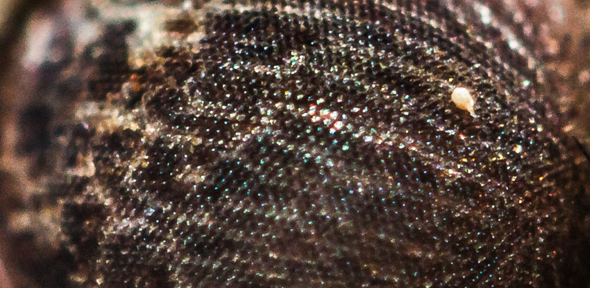
When they’re not hanging upside down, stick insects don’t need to stick. In fact, when moving upright, sticking would be a hindrance: so much extra effort required to ‘unstick’ again with every step.
Latest research from Cambridge’s Department of Zoology shows that stick insects have specialised pads on their legs designed to produce large amounts of friction with very little pressure. When upright, stick insects aren’t sticking at all, but harnessing powerful friction to ensure they grip firmly without the need to unglue themselves from the ground when they move.
In a previous study last year, the team discovered that stick insects have two distinct types of ‘attachment footpads’ - the adhesive ‘toe pads’ at the end of the legs, which are sticky, and the ‘heel pads’, which are not sticky at all. The insect uses different pads depending on direction and terrain.
By studying the ‘heel pads’ in more detail, researchers discovered the insects have developed a way to generate massive friction when walking upright. They do this through a system of tiny hairs that use combinations of height and curvature to create a ‘hierarchy’ of grip, with the slightest pressure generating very strong friction - allowing stick insects to grip but not stick.
The researchers say the study - published today in the Journal of the Royal Society Interface - reveals yet another example of natural engineering successfully combining “desirable but seemingly contradictory properties of man-made materials” - namely, the best of both hard and soft materials - simply through clever structural design.
“Just by arrangement and morphology, nature teaches us that good design means we can combine the properties of hard and soft materials, making elemental forces like friction go a very long way with just a small amount of pressure,” said David Labonte, lead researcher from the Department of Zoology.
The power of friction relies on ‘contact area’, the amount of close contact between surfaces. In rigid materials, such as steel, even the tiniest amount of surface roughness means there is actually relatively little ‘contact area’ when pressed against other surfaces - so any amount of friction is very small.
On the other hand, soft materials achieve a lot of contact with surfaces, but - due to the larger amount of contact area - there is also a certain amount of adhesion or ‘stick’ not there with hard materials.
To solve this, stick insect’s hairy friction pads employ three main tricks to allow contact area to increase quickly under pressure, creating a scale or ‘hierarchy’ of grip with absolutely no stick:
• Both the pad itself and the tips of the hairs are rounded. This means that, when pressure is applied, more contact area is generated - like pushing down on a rubber ball.
• Some hairs are shorter than others, so the more pressure, the more hairs come into contact with the surface.
• When even more pressure is applied, some of the hairs bend over and make side contact - greatly increasing contact area with very little extra force.
These design features work in harmony to generate large amounts of friction with comparatively tiny amounts of pressure from the insect. Importantly, there is hardly any contact area without some tiny amount of pressure - which means that the specialised ‘frictional hairs’ don't stick.
Arrays of tiny hairs have been found before, for example on the feet of geckos, beetles and flies. However, these hairs are designed to stick, and are used when creatures are vertical or hanging upside down.
Sticky hairs are completely aligned and have flat tips - meaning that they immediately make full contact that hardly changes with additional weight - as opposed to friction hairs, with their higgledy-piggledy height ranges and rounded tips.
“We investigate these insects to try and understand biological systems, but lessons from nature such as this might also be useful for inspiring new approaches in man-made devices,” said Labonte.
He uses the example of a running shoe as a possible man-made item that could be enhanced by stick insect engineering: “If you run, you don’t want your feet to stick to the ground, but you also want to make sure you don’t slip.”
Adds Labonte: “Stickiness is the force that is needed to overcome when trying to detach one thing from another. If the soles of your feet were made of Scotch tape, it may be helpful when you are walking up walls or hanging upside down, but the rest of the time it would be incredibly frustrating.”
“Stick insects have developed an ingenious way of overcoming the conflict between attachment and locomotion, with a dual pad system that alternates between stick and grip depending on the situation.”
Inset image: Scanning electron microscopy image of conical, micrometre-sized outgrowths that cover the tarsal ‘heel pads’ of some stick insects (false colours). Image by David Labonte & Adam Robinson.
Scientists have discovered that, when upright, stick insects don’t stick. Instead, they deploy special hairy pads designed to create huge amounts of friction from the tiniest of pressure increases - ensuring that the insects grip but don’t stick.
This work is licensed under a Creative Commons Licence. If you use this content on your site please link back to this page.


































